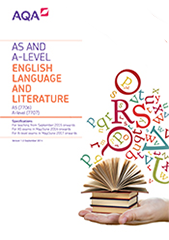Specification at a glance
This qualification is linear. Linear means that students will sit all exams at the end of their course.
Subject content
- 3.1.2 Remembered places
- 3.1.3 Imagined worlds
- 3.1.4 Poetic voices
- 3.2.2 Writing about society
- 3.2.3 Critical commentary
- 3.2.4 Dramatic encounters
- 3.3 Making connections
- Component 1 – 3.1.1 Methods of language analysis
- Component 2 – 3.2.1 Methods of language analysis
- Component 3 – 3.3.1 Methods of language analysis
Assessments
| Paper 1: Telling stories |
|---|
|
What's assessed
|
|
Assessed
|
|
Questions Section A – Remembered places
Section B – Imagined worlds
Section C – Poetic voices
|

| Paper 2: Exploring conflict |
|---|
|
What's assessed
|
|
Assessed
|
|
Questions Section A – Writing about society
Section B – Dramatic encounters
|

| Non-exam assessment: Making connections |
|---|
|
What's assessed
|
|
Assessed
|
|
Task A personal investigation that explores a specific technique or theme in both literary and non-literary discourse (2,500–3,000 words) |
